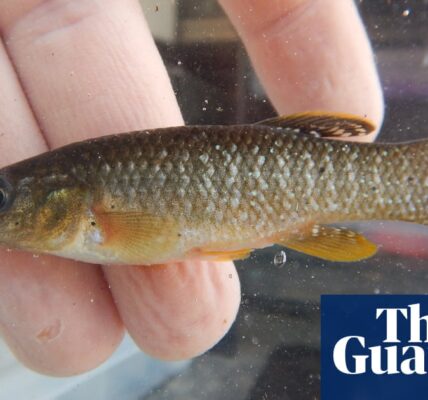Controversy arises as Kew Gardens and Natural History Museum announce plans to relocate collections away from London, sparking accusations of “cultural vandalism”.
This facility aims to become a leading research center by housing some of the most significant collections of historical, botanical, and zoological samples from the UK. The British Museum, Royal Botanical Gardens at Kew, and Natural History Museum in London will contribute millions of ancient mosaics, sculptures, plant specimens, and fossil remains to be relocated to Reading University’s Thames Valley Science Park in Shinfield, Berkshire.
According to senior staff members of museums, due to London’s old buildings, deteriorating storage areas, and expensive land prices, the only viable solution to safeguard the growing number of scientific and cultural artifacts and to improve accessibility for researchers is to relocate outside of the M25. The estimated cost for this move could exceed 500 million pounds.
However, not everyone has embraced this extensive housing initiative. It has sparked considerable controversy among certain groups, with experts condemning the proposals as destructive to cultural and scientific preservation. Some have also accused Kew and the NHM management of pressuring employees to agree to the collection rehousing plan.
A petition with over 15,000 signatures at Kew urges management to reconsider their decision to relocate the 170-year-old herbarium to the new science park. Among the signatories is Sir Ghillean Prance, a former director of Kew, who expressed his disappointment with the relocation of the collection that holds over 7 million specimens of dried and pressed plants from various regions.
The herbarium, located in the heart of Kew, is among the oldest in the world and plays a vital role in the connection between the collection and the rest of the botanic gardens. Currently, it is bustling with botanists and researchers from around the globe who utilize this crucial plant collection. Relocating the herbarium to a remote location would greatly diminish its value.
Some individuals believe that moving the herbarium could disrupt the efforts of scientists who are already overwhelmed with the task of identifying and protecting plants amidst growing biodiversity loss worldwide. Prance, a scientist, also expressed the significance of this herbarium, which contains original specimens used in naming plant species. He believes it should remain a central part of Kew.
The managers at Kew disagree with these critiques. They claim that the existing herbarium building has already undergone six expansions since it was initially used to store the gardens’ plant collection in 1856. However, constructing a new building would be challenging due to strict construction limitations as Kew is recognized as a world heritage site. Moreover, there is an increasing threat of flooding from the nearby River Thames, and the current building is also at risk of potential fires in the future, similar to the one that devastated the National Museum of Brazil in 2018.
According to Prof Alexandre Antonelli, director of science at Kew, our plans for a cutting-edge science facility will not only enhance Britain’s standing in botanical research and innovation, but also enable us to uncover the mysteries of these specimens in the years to come.

Currently, the herbarium, which serves as a specialized research center, is not accessible to the public. However, once the plant collection is transferred to the science park, the building will be renovated into a science hub where Kew’s top specimens, including those given by Charles Darwin, will be exhibited for public viewing, according to a representative.
Next month, the board of trustees at the gardens will vote on the proposed relocation of the Kew herbarium, which could potentially take 10 years and cost £200 million to complete. A decision will be made at that time.
In contrast, the NHM has already made a decision to relocate some of its collections to Shinfield. The new facility, for which planning permission is pending, will receive £200m in funding and will house 28m museum specimens. These specimens range from tiny samples of ancient crustaceans to fragments of some of the largest creatures on Earth, such as whales. The data from these specimens will be digitized and made available to scientists worldwide.
“In the last 250 years, we have accumulated approximately 80 million specimens, representing the diverse range of life on our planet. Unfortunately, not all of these specimens are currently stored under optimal conditions. By relocating some to the new science park, we can ensure their improved preservation and easier accessibility for researchers,” stated a representative from the museum.
Please bypass the advertisement for the newsletter.
after newsletter promotion
However, despite being approved and funded, the plan has received criticism from a faction of former senior employees of the museum. In a letter to the Times published this month, they argue that this decision reflects the Natural History Museum’s trend of losing expertise and dispersing collections, setting a precedent for other museums to follow.
A team of former researchers, curators, and department heads contends that natural history museums hold a unique position in the study and comprehension of life’s evolution on our planet, thanks to their extensive collections and knowledgeable curators within fully functioning institutions. They argue that generating virtual representations of these collections will dissuade individuals from physically interacting with the specimens.
The museum management stated that construction of the new center is projected to commence in the upcoming year and conclude in 2027. Relocating their collection of specimens is estimated to require an additional three to four years.
The British Museum has initiated the process of transferring millions of its cultural treasures to its archaeological research collection at the science park. According to a spokesperson, this facility will hold a large portion of the museum’s ancient world collections, such as archaeological artifacts, sculptures, mosaics, and historical casts. So far, approximately 1.5 million objects have been relocated.
In contrast to Kew and the NHM, there has been minimal resistance.
Source: theguardian.com

